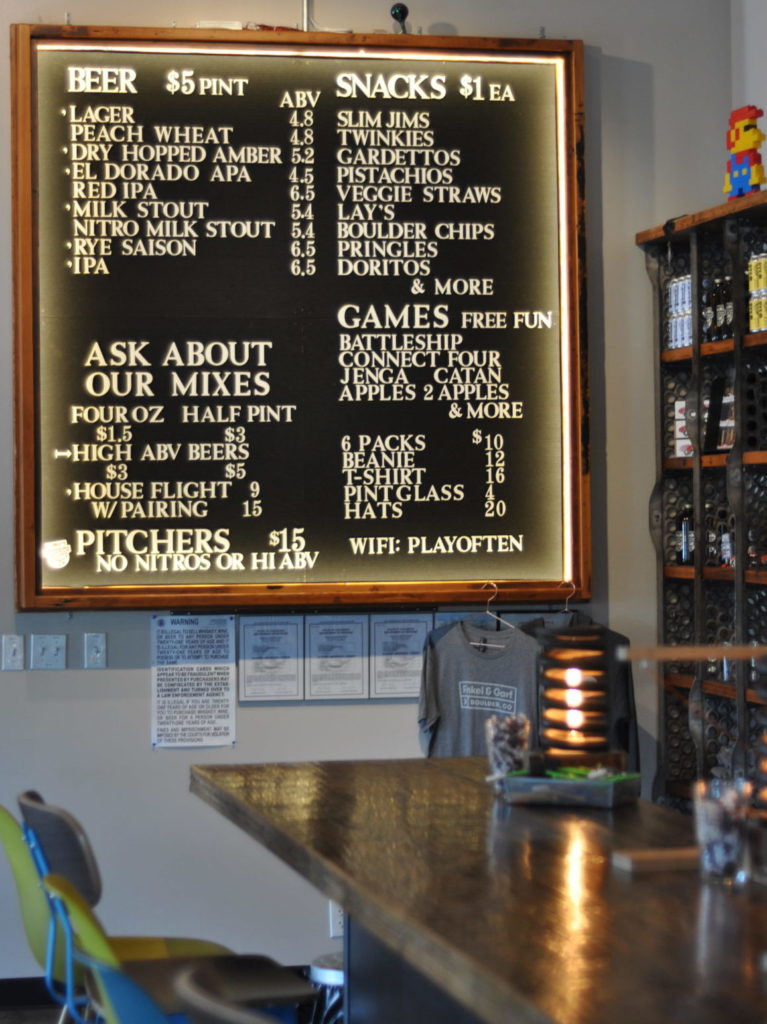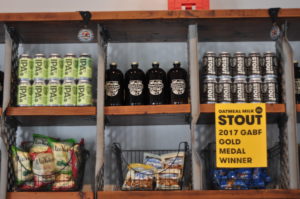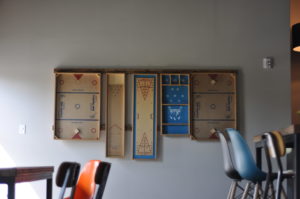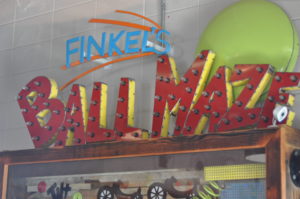Finkel and Garf Brewing Company brews beer for big kids.
“Whether you’re 21, 40 or 60, you [still can be] a kid,” says Finkel and Garf founder, Dan Garfinkel.
The brewery’s Gunbarrel taproom is whimsical and light. Legos, board games and classic toys adorn the walls and tables. Besides the unmistakable smell of fermenting beer, you’re not sure if you just stepped into a taproom or a toy store.
Finkel and Garf’s theme of “play often” is born out of the family’s former classic toy business. Dan (“Garf”) and his dad, Eric (“Finkel”), kept the toys and fun, but now choose to sell beer instead.

Before starting the brewery, Dan worked in tech. He was one of the original ten founders of innovative payment mobile app Venmo, which is now owned by PayPal. Dan served as head of culture and community, tasked with holding Venmo true to its goal to be “… friendly, vibrant and close-knit.”
Finkel and Garf’s has a similar goal — stay close-to-home, know your customers and, unique to this endeavor, have fun drinking great beer together.
Since 2014, the Garfinkel’s have run Finkel and Garf as a neighborhood brewery. They intend to brew beer for people no more than an hour away. This is an increasingly popular tactic for small craft brewers, as competition has skyrocketed and market differentiation beyond a local footprint has become challenging.
Neighborhood focus
“We like our neighborhood … when you buy a six pack at the liquor store, we can’t interact with you,” Dan says.
This may be true, but the beer cooler isle is where Finkel and Garf decided to distinguish itself. Dan knew they had to “design with cans in mind” if they wanted to compete with the quickly-saturating craft beer market.
The Garfinkel team chose the local Cast Iron Designs to ensure their play often theme carried through. From the colors of each beer’s can to the toys in the company’s crest, the family played a key role at every step of the branding process.

Opting for blank silver cans with bold and bright dual-color labels, the beers pop from the cooler and simultaneously blend in on the taproom shelves.
“We’ve worked hard in the can market and done well,” Dan says.
Indeed, branding is an increasingly important element in craft beer success. Brewers have to present a clear brand and image to consumers flooded with options.
Finkel and Garf has had success with the beer itself, too. Its Oatmeal Milk Stout won gold in its category at the 2017 Great American Beer Festival.
Dan recently handed the head brewer title over to recent CU graduate, Connor Ventura. Connor rose through the ranks at Finkel and Garf and is now overseeing the beer ops, bringing some of his own creations, such as the New England IPA, to production.
Barrel-aging is on the brewery’s docket, too. An imperial version of their awarding-winning Oatmeal Milk Stout is currently sitting in Four Roses bourbon barrels, awaiting its debut.
Finkel and Garf brews out of six 15-barrel and four 30-barrel fermenters. For 2018 it is on track to brew 3,500 barrels.
Finkel and Garf ambience. Photo credit: Marc Doherty, BLDRfly.
Competition and collaboration
When asked about competition, Dan musters an all-for-one, one-for-all stance. “The only way the craft beer industry can thrive is if we continue to help each other,” he says
Recently, Dan was short some grain, so he called on friends at Left Hand Brewing. Sanitas Brewing called them once, short on cans, and Dan was able to provide.
Dan also doesn’t seem to fear the recent passing of a provision allowing grocery stores in Colorado to carry full ABV beer. Many craft brewers are concerned that this will steal customers from their stronghold in local liquor stores, where they stand a chance in battling the big brands.
“Time will tell and, at the end of the day, the consumer is going to go where the best craft options are,” he says. “I think the craft consumer isn’t looking for convenience so much as they are looking for choice.”
Feature image: Dan Garfinkel. Photo credit: Marc Doherty, BLDRfly.






